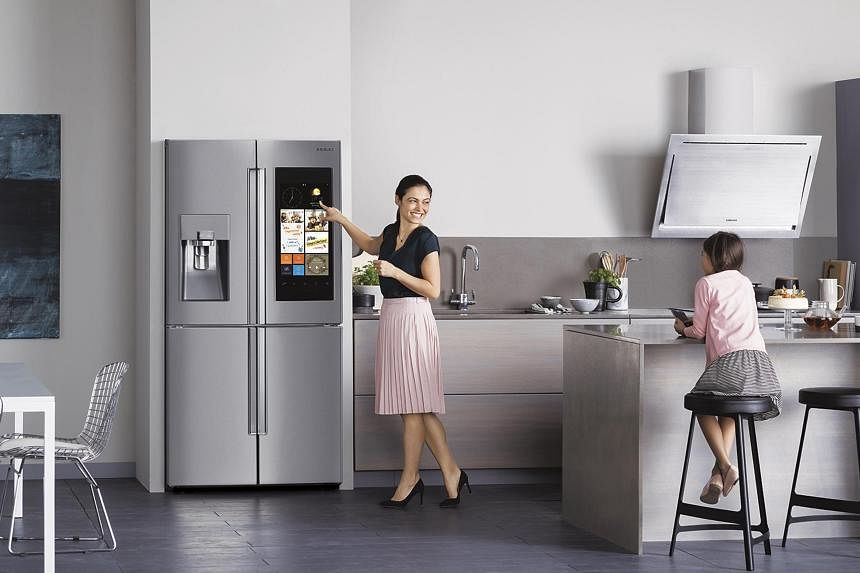SINGAPORE – Mainstream home fibre broadband offerings have been given a 10-fold speed boost, allowing users to upload to and download content from the Web at up to 10 gigabits per second (Gbps).
Last Monday, StarHub announced the availability of its UltraSpeed Broadband, which offers upload and download speeds of up to 10Gbps. Meanwhile, Singtel will offer its 10Gbps Fibre Home Bundle from April.
StarHub and Singtel join ViewQwest, which since 2016 has been allowing users to upload to and download content from the Web at up to 10Gbps.
The Straits Times answers some questions about the new 10Gbps plans.
1. How are the latest plans from StarHub and Singtel different from ViewQwest’s plan?
Singtel’s and StarHub’s new offerings rely on a new technical standard known as 10G symmetric passive optical networks (XGS-PON), which bumps up the upload speed from 2.5Gbps up to 10Gbps. The maximum download speed is unchanged at 10Gbps.
With upload and download speeds both at up to 10Gbps, users get symmetrical Internet access. This means they can upload content to YouTube, or large media files to OneDrive or Dropbox, at the same speed as they can download them. For instance, a one-hour 4K-quality clip may now be uploaded in 21 seconds using a 10Gbps connection instead of 84 seconds previously.
ViewQwest does not rely on XGS-PON but uses a business-grade metro Ethernet technology designed for businesses to implement long-distance networking. Metro Ethernet is believed to be superior as it theoretically offers dedicated 10Gbps for a subscribing household, and does not allow neighbouring households to share the pipe.
2. How much is a 10Gbps plan?
StarHub’s plan is $99.90 a month (StarHub offers a Smart Wifi Nokia Beacon 2 router for $5.05 a month).
Singtel’s plan is $193.80 a month (a 10Gbps optical network router and a pair of wireless dual-band WiFi 6 Mesh extenders come free).
ViewQwest’s plan is $288 a month (users need to buy their own router, with the cheapest available QNAP Qhora-301W going for $599).
3. Do home users need 10Gbps, and for what applications?
Singtel and StarHub cited growing demand for faster connectivity and an increase in overall upload traffic for launching their new service.
At 10Gbps, the Internet pipe is fatter (so to speak) to support the connectivity of more devices or appliances.
Indeed, the number of smart devices has grown. Smart TVs, smart speakers and Internet-connected appliances such as robotic vacuum cleaners and smart refrigerators are increasingly making their way into homes in Singapore.
Research firm Statista estimates that more than 80 per cent of home appliances will be Internet-enabled in 2027, from 33 per cent at the end of 2022.
Today, however, the average household with family members watching movies on Netflix or listening to music on Spotify is unlikely to need bandwidth beyond 1Gbps. A 4K ultra HD stream from Netflix requires just 15 megabits per second (Mbps), or 0.015Gbps. A Zoom call uses between 600 kilobits per second (kbps) and 4Mbps, or 0.004Gbps.
But prolific content creators or demanding users who need to upload multi-gigabyte files regularly will appreciate a fatter pipe so that their activities will not affect the surfing experience of other family members sharing the pipe.
4. Will users reach the top speed of 10Gbps?
Actual Internet speed is dependent on factors such as the responsiveness of websites, overall Internet congestion and whether bandwidth is limited – “managed” or “throttled” in tech-speak – by Internet service providers.
In frequently asked questions about its 10Gbps plan on its website, Singtel says it implements traffic management of peer-to-peer, file-sharing activities to ensure there is ample network bandwidth for all other Internet activities.
So how can you get as close to 10Gbps as possible, assuming the above considerations are not an issue? New equipment might be necessary.
First, get a solid-state drive (SSD) desktop computer with a wired 10Gb network port.
SSD computers are superior to traditional hard disk drive (HDD) computers. The latter uses mechanical spinning disks and a moving head to access and write data on the hard disk. SSD, on the other hand, uses flash memory chips and is thus faster.
For Apple users, the Mac Mini can be configured with a 10Gb port, while the Mac Studio comes with it by default. If you are using a mainstream PC that does not come with built-in 10Gb ports, you may use an external network adapter such as the Thunderbolt 2 10Gb. Alternatively, customise a new PC from brands, such as Aftershock, with 10Gb ports.
You will also need a Category 6a, 6 or 5e Ethernet cable, with one end plugged to the 10Gb port and the other end plugged to a network router supplied by the Internet service provider.

Wired networking is recommended because the fastest Wi-Fi networks today can transmit only a fraction of the 10Gbps offered by the new plans.
Other members of the family who do not need the zippy 10Gbps connection may connect their devices over Wi-Fi using the standard routers supplied by StarHub and Singtel. Devices connected over Wi-Fi will surf at up to only 1Gbps. Uploading speed will be limited to 1Gbps.
ViewQwest 10Gbps subscribers will need to separately buy an Internet router to share Internet access with the rest of the household. Prices start from $599.
For more reliable Wi-Fi speeds, users can set up a mesh network based on the latest Wi-Fi 6 standard. Compatible with earlier Wi-Fi standards, Wi-Fi 6 supports more connected devices without them experiencing surfing speed degradation.
Unlike a standalone Wi-Fi access point, a mesh Wi-Fi setup comprises two or more Wi-Fi nodes around the home for better wireless access coverage. It can get pricey. For example, the Linksys Velop MX12600 with three nodes retail for $1,099.
- Paul Mah is a freelance tech writer.
Editor’s note: This article has been edited for clarity.

